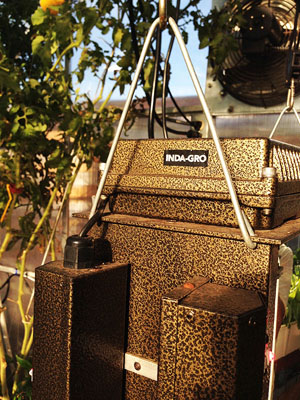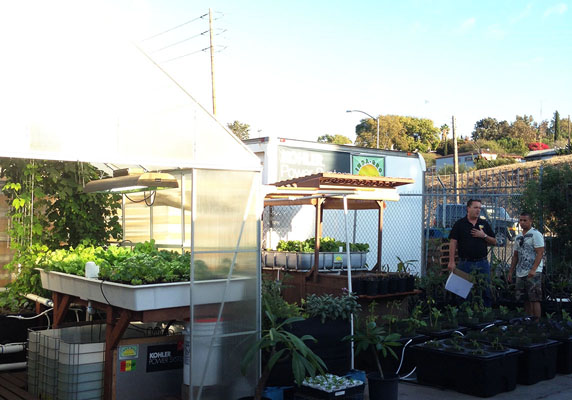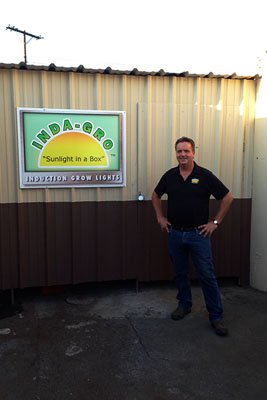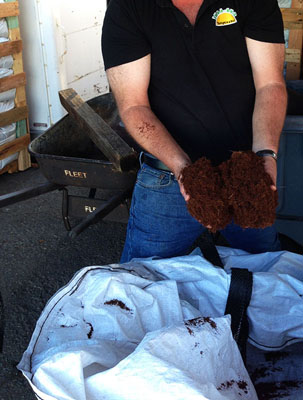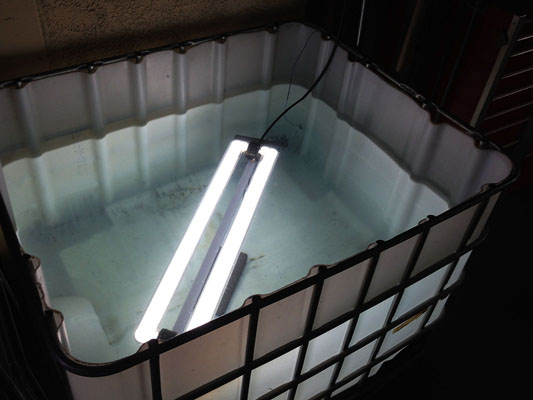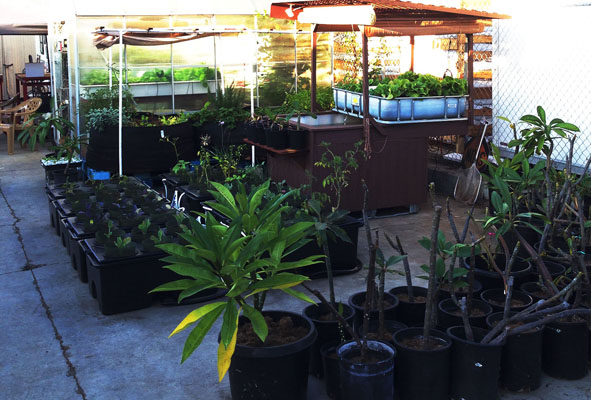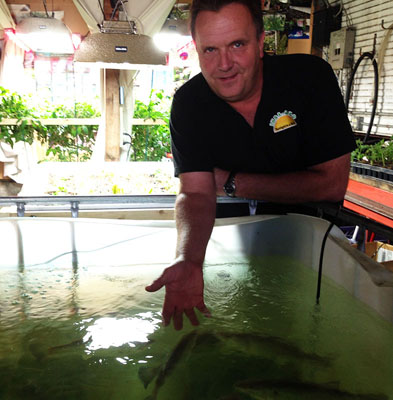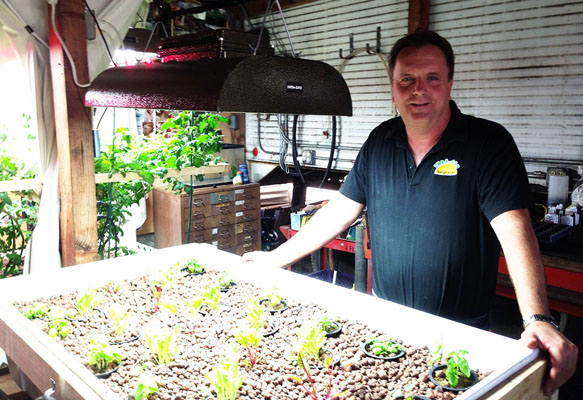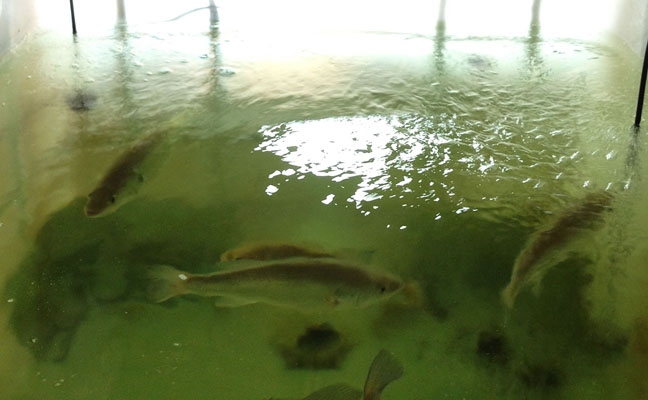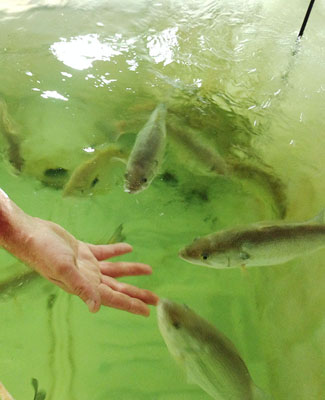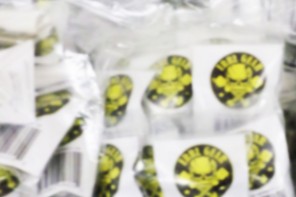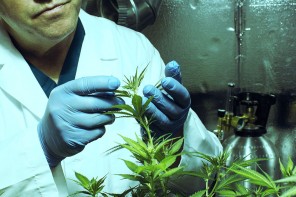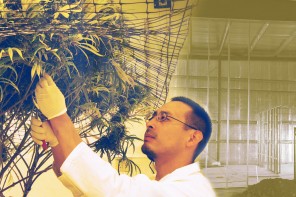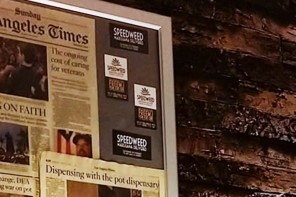Under The Leaf: Darryl Cotton of Inda-Gro
Teeming with lush green on-site gardens, desks billowing with plans that push the limits of their already exemplary products, and a team that works so hard they don’t seem to notice the hours go by; This is what we saw at Inda-Gro, the #1 manufacturer of induction grow lights in the world. The amount of talent, innovation, and passion that we felt while there was incredible. We were somehow able to catch Darryl Cotton, founder and CEO of Inda-Gro, for a spare moment and really dive into how he runs his business. Getting the chance to have a conversation with a gentleman who is as transparent about his products as he is about the core of his success, is what makes this the golden nugget that you need to join the industry.
Give us a brief spiel about what you do. What is Inda-Gro all about? What is at its core?
Well, Inda-Gro came from our original company that started back in 1987. We were involved with anything at all that had to do with power generation, back-up power systems for buildings, off-grid, on-grid, and so-on. As engineers and contractors, we worked with Kohler as well as other power-generation companies to reduce the loads in buildings so that we’d have adequate emergency circuits by these generators. I’m from the Midwest, I’m a gardener at heart; I’ve been gardening cannabis in the Midwest since the ’70s. But if you’re from the region, you’ll know that the weather conditions during the winter months force you to have to grow indoors. We would use fluorescent lights that put out what we thought were acceptable wavelengths to make the crops produce, but we didn’t know then what we know today.
I’m a gardener at heart; I’ve been gardening cannabis in the Midwest since the 70s.
In coupling my experience as a power-generation professional and knowing ways to lower loads, we started looking for reasons to stop using the higher intensity lights to grow our crops. In doing that, we looked at all the technologies. Inda-Gro was founded on its core mission to lower wattage-usage in grow rooms while still succeeding in a healthy crop response. We didn’t want to make any sacrifices; we needed our lights to yield high-quality crop for medical cannabis patients, yet remain as energy-efficient as possible. In my research, I found that there really wasn’t a technology available that could replace HID (high intensity discharge) that was both energy-efficient and maintained a great crop response in terms of yield and quality. This was until we stumbled upon the Tesla core. Nikola Tesla, back in 1891, developed a fluorescent that would excite the gases in these tubes to create light spectrums that would benefit the growth of the plant. We started experimenting with this technology back in 2005 and collaborated with chemists to find phosphori that were more responsive to the cannabis crop. Once we found these, we immediately integrated them into our lamps. And that was just the beginning.
How do you start your day? What is the first thing you do?
I really don’t consider what I do as ‘work’, I consider it labor. We have our own gardens at our facility here in San Diego and this is so that we can test and trial any and all of our products. We grow the plants here so that we can study what they do in real-world applications. So, my day really always starts out in our gardens! We are very committed to engaging people in what we do; we offer tours through our gardens and we also have a live-stream on our website of all our plants growing in real-time. We have plants that grow both indoors and outdoors; some require our lights exclusively and some, just during the long night hours. We give our plants the light they need, as they need it. Our gardens are proof that our products are successful, so I make it a point to start my day out there to see how our plants are doing and how well our products are performing. It’s honestly a labor of love.
What does a normal day look like to you?
After I spend some time in our gardens, I begin working with our engineers and our plant-science specialists to both fill our orders and continue doing research and development for our products. We are always trying to bring more value to our gardens, it’s a constant push to better ourselves. We are the #1 Manufacturer of induction grow-lights in the world and we are based here in the United States, you won’t find us in China. Everything I do in a day is to coordinate our talents to put the best products on the market that we can!
What are the three items you have on you at all times?
- My Blackberry: I need to stay in touch with our various growers all over the world so that if they have questions, we are accessible. We pride ourselves on that; we want to know that they’re using our products in the way they’re meant to be used and that they’re getting returns that exceed their expectations.
- My Dogs: I always have them on me. They are both rescues and are still puppies and come into work with me every day. They are a part of our family; everyone who works here is family and my dogs are no different. They do a great job in keeping you collected in stressful situations and are all-in-all great to have around!
- Dog Treats: To keep my puppies entertained. 🙂
What does your work space look like?
I keep my personal workspace very orderly, but everything around me is organized chaos. And I say that in a good way. We are constantly working on developing our products and that is definitely something that requires an open-mind and an open-approach to getting to that next solution. Once we develop an idea and optimize how we’re going to build them, we put them into rigorous trial phases. If they perform how we designed and envisioned them to, it moves onward to production. We don’t settle for something that simply works, we strive for the best and are always raising the standard for Inda-Gro’s products.
What do you love about what you are doing with your business?
I take pride in the fact that we are very environmentally conscious. We are giving the everyday consumer the opportunity to grow their own food and their own medical cannabis and do that with all the organic processes that are currently available to them. Everything I do now is with aquaponics and that includes medical. We use the fish to create an environment where their waste creates ammonia which breaks down into a nitrite which is then converted into a nitrate. The plants love this; they need this. When you take that fish waste and let the plants absorb it in their root structures, they are receiving the most organic and quality nutrients that they can get. You no longer need to go out and buy bottled nutrients, soil, hydro-systems, or aeroponics. We’ve worked with those systems before, but that’s no longer what we are interested in now. We don’t want to introduce those heavy metals back into our wastewater systems. We care about saving water and being energy-efficient. That’s the core foundation of Inda-Gro and I am passionate about constantly optimizing this mission and finding new ways to save more and waste less. We are empowering people to grow their own plants, whether it be food or cannabis. That’s a message to be proud about.
How do you choose the people you work with? What do you look for?
I choose people who are independent thinkers and who have talents that I don’t have. The truth is, that you can’t possibly do everything yourself. Everyone has things that they are good at and things that they aren’t so good at, so I try to make a team of people that have an array of talents. I also look for people who share our core belief at Inda-Grow. It makes for a much stronger environment to be in. Those people who are looking for a 9-5 don’t last here very long. I remember watching a movie a while back about Steve Jobs and all his programmers wore shirts that said, “Working 80 hours a week and lovin’ it!”. When you love what you do and are passionate it, time just flies. Sometimes I look up from what I’m doing and I can’t even believe it’s already the end of the week! So, I choose to surround myself with people who are as passionate about what Inda-Gro is doing as I am.
Many people are getting into this industry because of the money and I urge everyone to take a step back. Think about what happened in the ’30s with the Dust Bowl. The price of the wheat crop went up by 200% in value and so everyone began tearing up their native crops to grow wheat. Then the price of wheat went down because everyone was growing it. What happened? Farmers went broke and we were left with a mass amount of empty fields that weren’t being farmed, which then allowed the dust to whip up in the storm. Don’t get caught up by the dollar signs; think before you grow. Our products help you grow responsibly and lead you into the industry the right way so that you can be profitable AND be environmentally-conscious.
Don’t get caught up by the dollar signs; think before you grow.
Do you have a motto or a phrase that keeps you going throughout the day?
I always think to myself that we need to keep the garden a better place. That’s our ideology, our magnetic north, our compass. “Make the garden a better place.” Our goal is not to get rich but, like Tesla did, we hand off the technology. Who knows! Maybe they can improve upon it. Either way, everybody wins. We are making the world a better place and having a great time doing it.
We even founded the International Artificial Grow Association (IAGA), so that we could bring all the light manufacturers together and disband this nonsense about whose light is the best light and so-on. We have since generated a great following and in January, the grower that was elected by the group is going to trial all these products together under the same denominator of conditions, nutrients, and care. The humorous thing about it all is that these manufacturers who were so adamant about claiming the superiority of their products, refuse to participate in the comparison trial. What does that tell you? I think that to make the garden a better place, you have to be transparent; you need to know what you’re doing, how you’re doing it, and how you are affecting the environment around you. That’s what keeps me going throughout the day.
How do you end your day? What’s the last thing you do?
Well, all of our lights are on automatic timers, so there is nothing that I have to do there. So, the last thing I do is give our fish their last little bit of food and then it’s sayonara!


